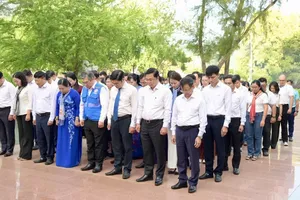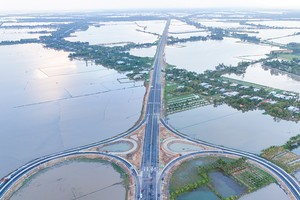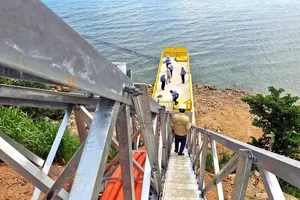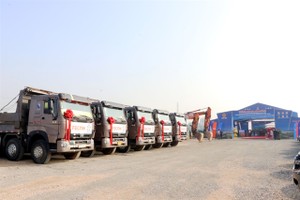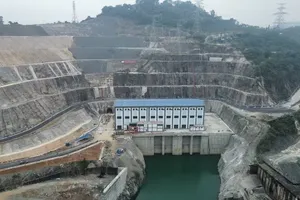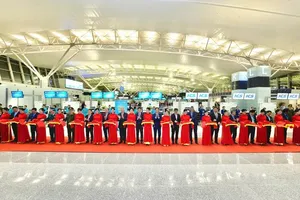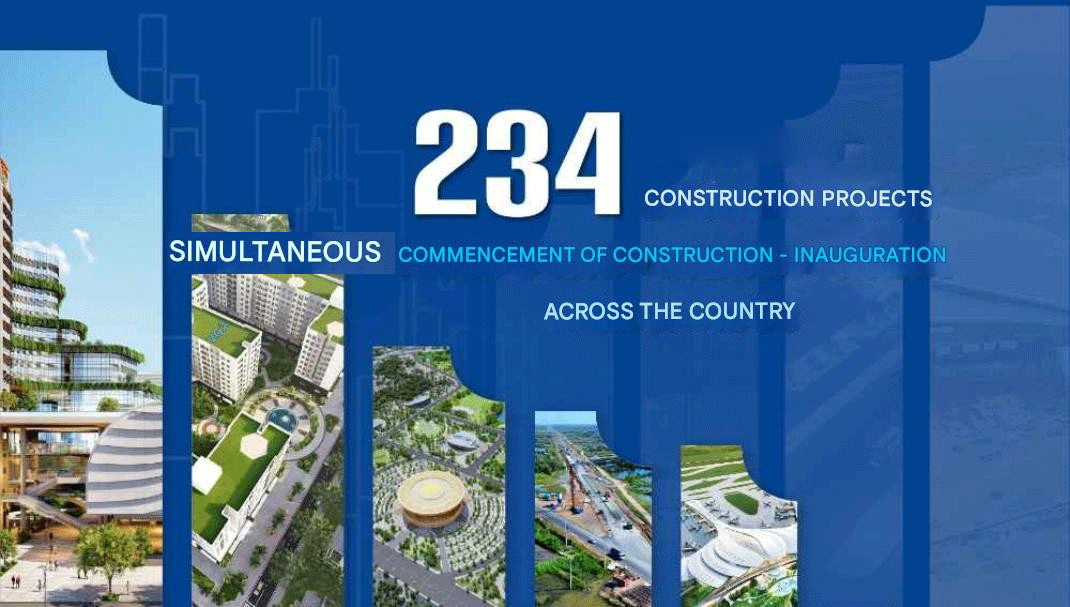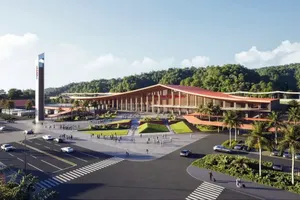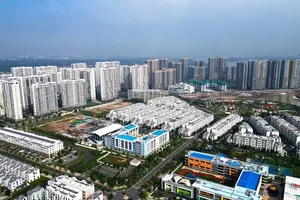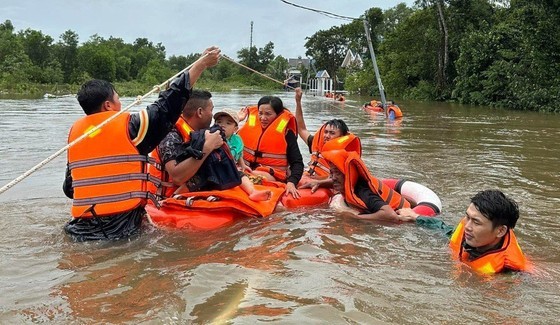 |
| Flooding in Ben Tram area, Cay Thong Trong Hamlet, Cua Duong Commune, Phu Quoc City, Kien Giang Province (Photo: SGGP) |
In the middle of this September, high tide on Hau River appeared and reached 1.88m, almost at the second alarming level. It has flooded various streets as well as urban areas along the riverbanks.
Scientists report that only in 4 years from 2018, the record-high water level in Can Tho City was repeatedly broken. The highest now is 2.1m which was recorded last October, which is 0.1m higher than the third alarming level. At that time, several important streets in the city like Tran Hung Dao, Cach Mang Thang Tam were deeply under water. It is predicted that the urban areas of Can Tho, Soc Trang, Vinh Long have a grave risk of facing even worse high tides this September and October.
In the last two years, Rach Gia City of Kien Giang Province has been continuously flooded whenever there is high tide or rain. The situation is getting worse and worse, but it takes time for this sewage to flow away. 42-year-old Nguyen Tien Tai, a civil engineer living here, attributed this to poor drainage solutions and high urban construction density.
It is more confusing that even an island city like Phu Quoc still faces the same state. Nguyen Thi Tinh, a fish sauce producer in Phu Quoc City said that the area used to experience no such flooding no matter how heavy or long the rain was thanks to the green space on the island. She blamed this negative state now to deforestation for land trading.
Sharing a similar situation is Long An Province, with certain sections of National Highway No.1 deep under water after rain, preventing vehicles from moving and causing serious congestion. Chairman of the People's Committee of Ben Luc District Le Thanh Ut explained that the section passing his district suffers this flooding due to the inconsistency between the old and new sewers, leading to slow drainage.
The Mekong Delta is now facing such natural disasters as flooding owing to high tide, rising sea level, floods from upstream, drought, salinity intrusion, and landslides. Besides natural factors, the flooding state here also stems from the construction of closed dikes for rice production upstream and land subsidence because of urbanization, concretization, and excessive underground water exploitation.
Statistics reveal that the annual average land subsidence rate in certain urban areas reaches 1.5cm. Vietnam has been ranked 23rd out of the top-30 countries severely affected by climate change. One-third of the Mekong Delta is predicted to be under water, which is the largest in the world. It is also forecast that the sea level will rise by 0.5-1m at the end of the 21st century. Without proper solutions, about 10-12 percent of the Vietnamese population and 39 percent of the surface area in the Mekong Delta will be severely impacted.
Therefore, the Politburo released Resolution No.06-NQ/TW on January 24, 2022 about planning, construction, management, and sustainable development of urban areas in Vietnam, clearly focusing on improving the infrastructure and increasing the capacity to fight against natural disasters, especially in the Mekong Delta, to cope with climate change.
Deputy Director Tran Thi Lan Anh of the Urban Development Agency (under the Construction Ministry) stressed that it is necessary to save space for water flowing and improve urban infrastructure to adapt to high tides.
Independent expert on ecosystems in the Mekong Delta Nguyen Huu Thien reported that many upstream places in this region are building closed dikes to grow three rice crops per year, causing higher water levels in the downstream and widespread flooding in Can Tho City, Vinh Long Province. When there is a high tide, the situation worsens.
He proposed that the immediate solution would be to improve the drainage system in those flooded areas. For instance, in the planning of Can Tho City, there must be green space for rainwater to seep into the ground. The canals inside the city are of great importance as well since they beautify the location as well as serving as a drainage method, and thus must not be encroached or leveled.


